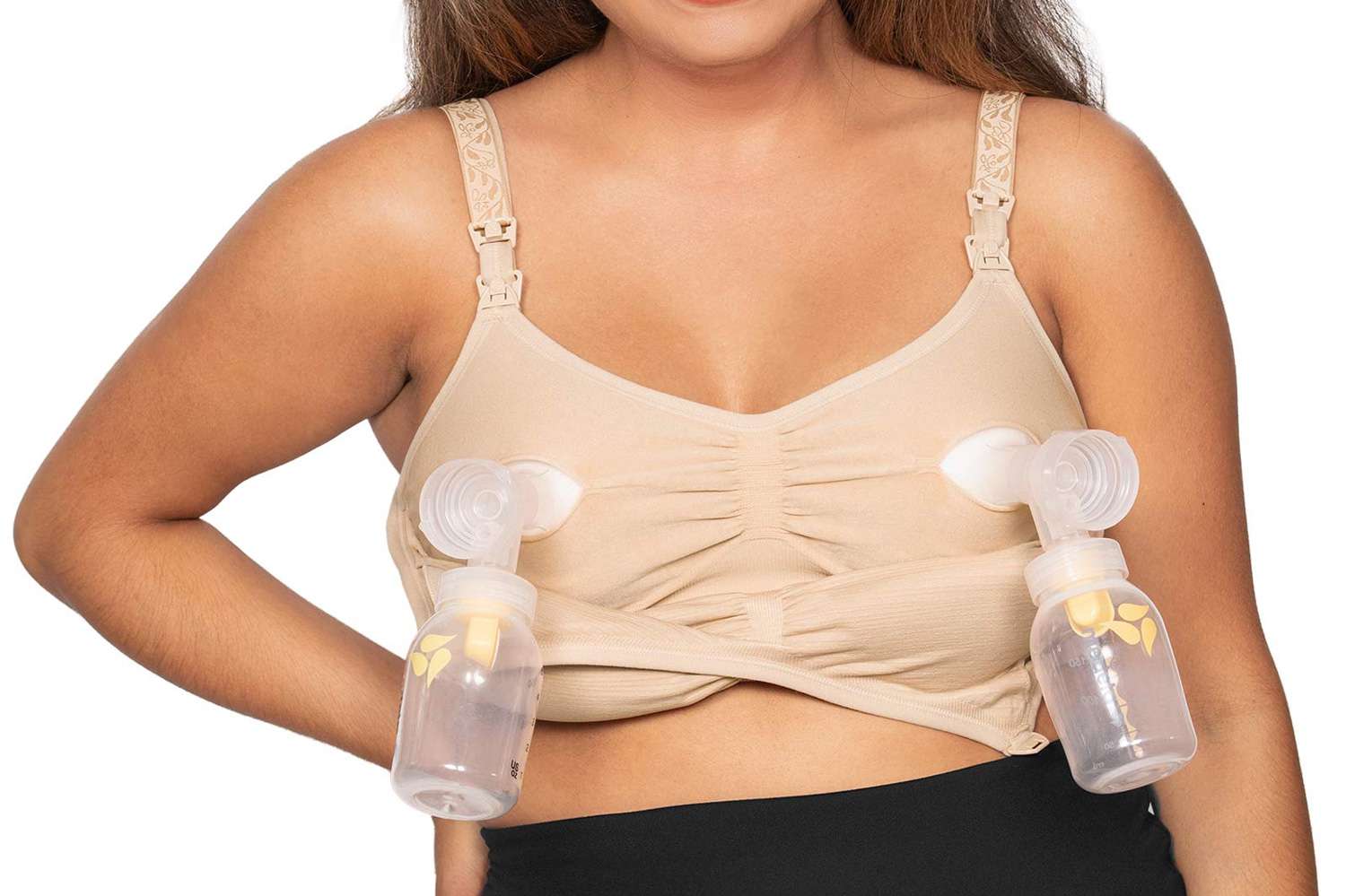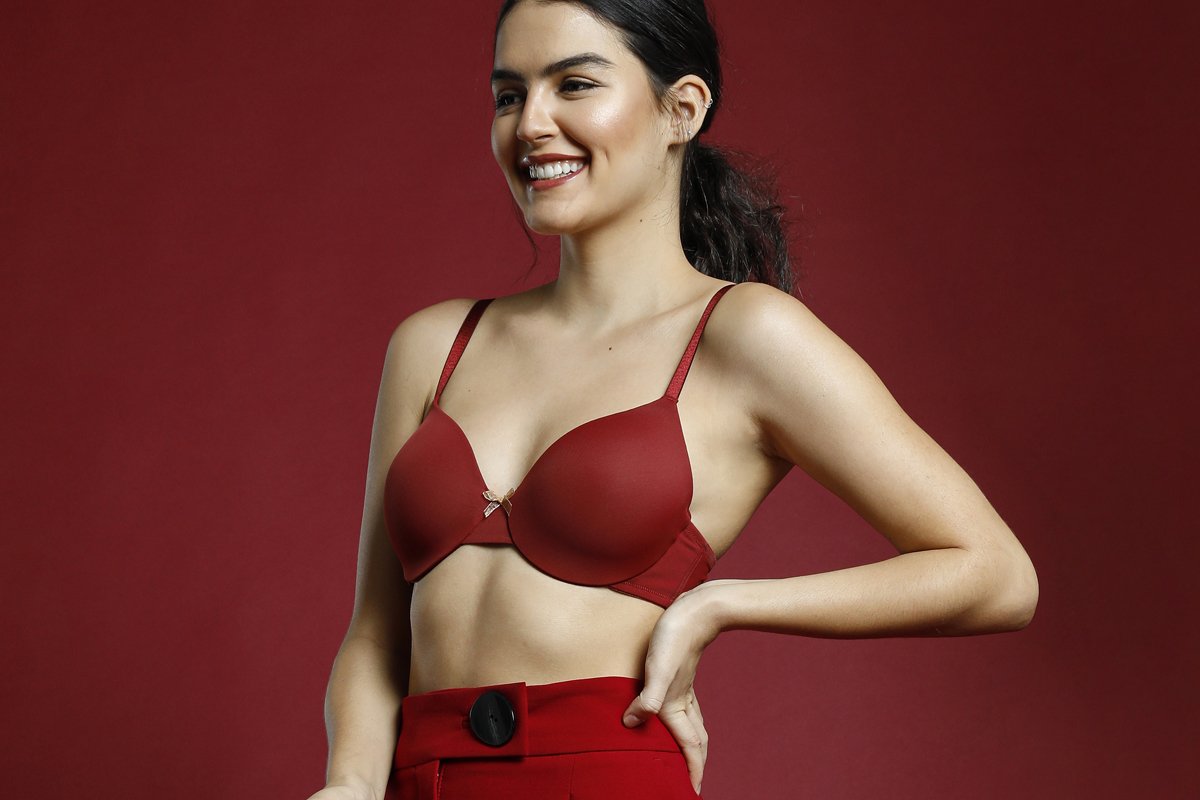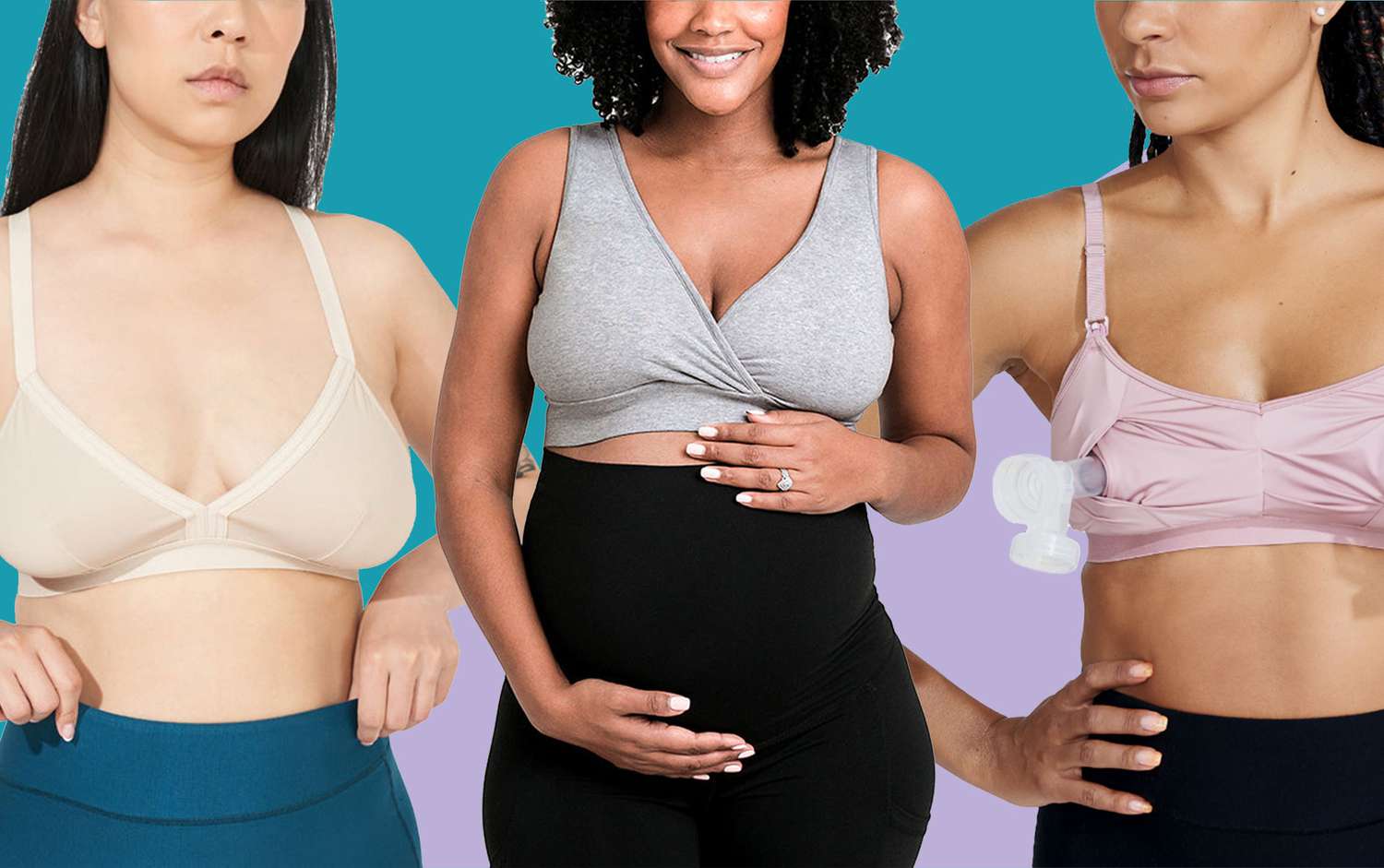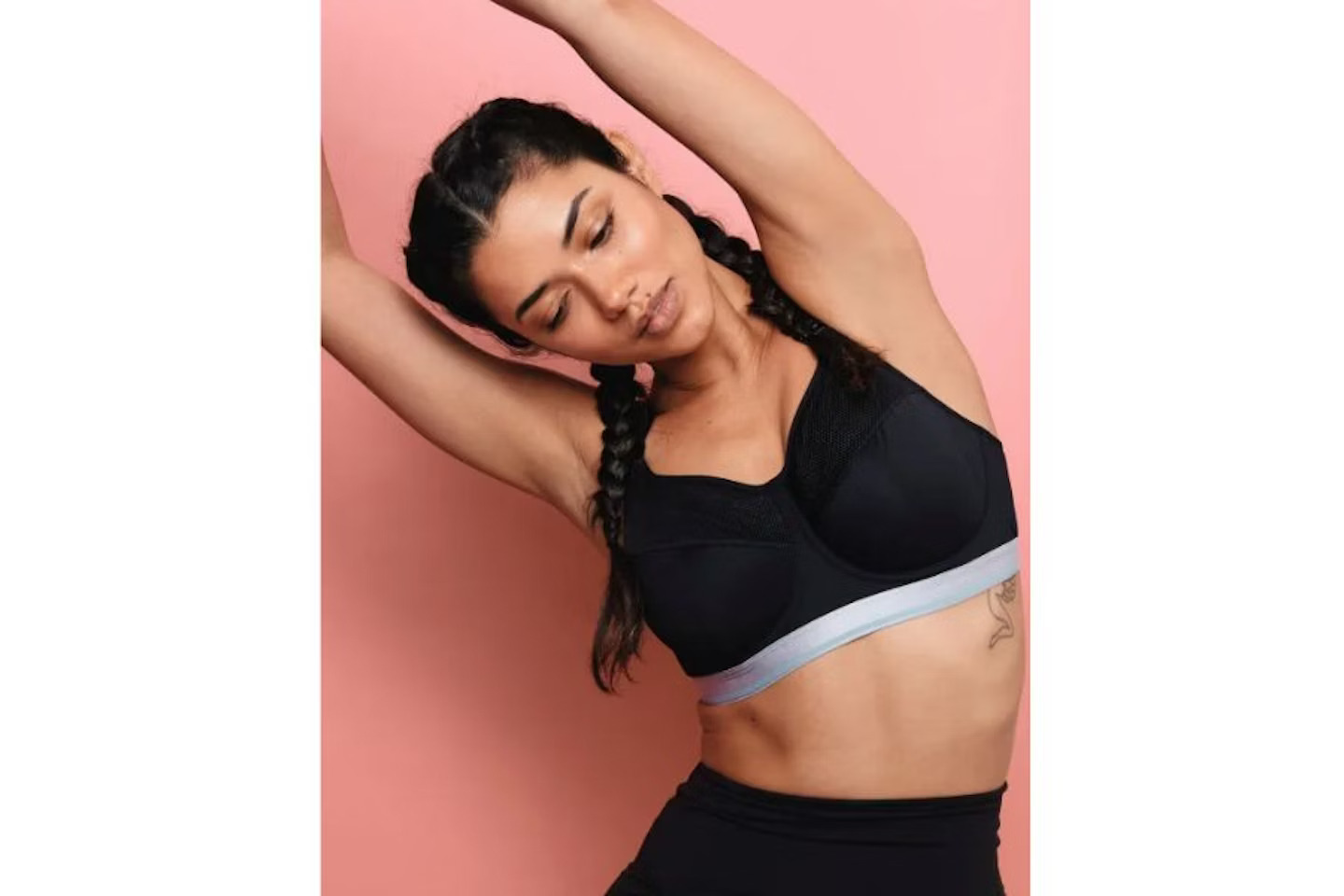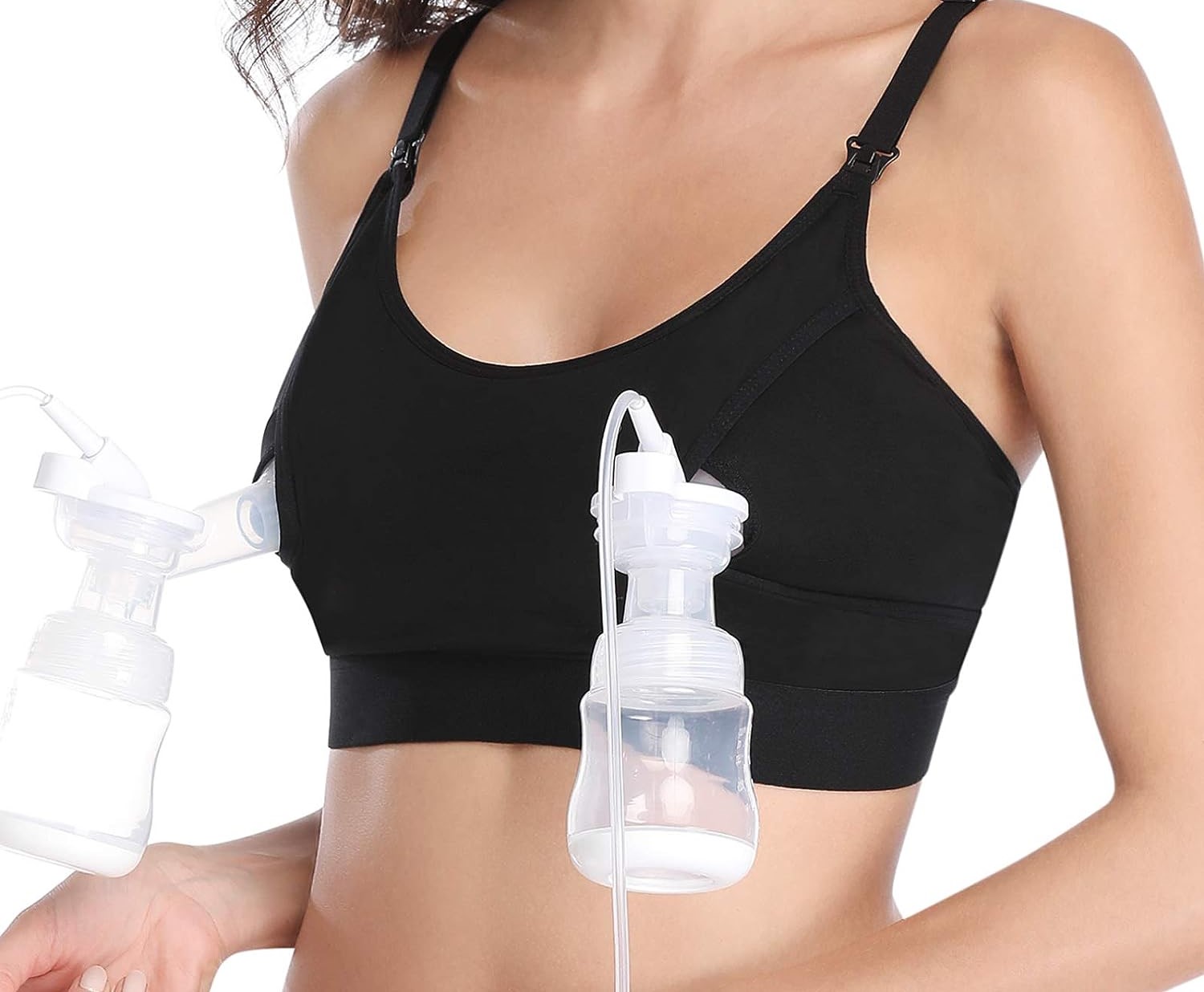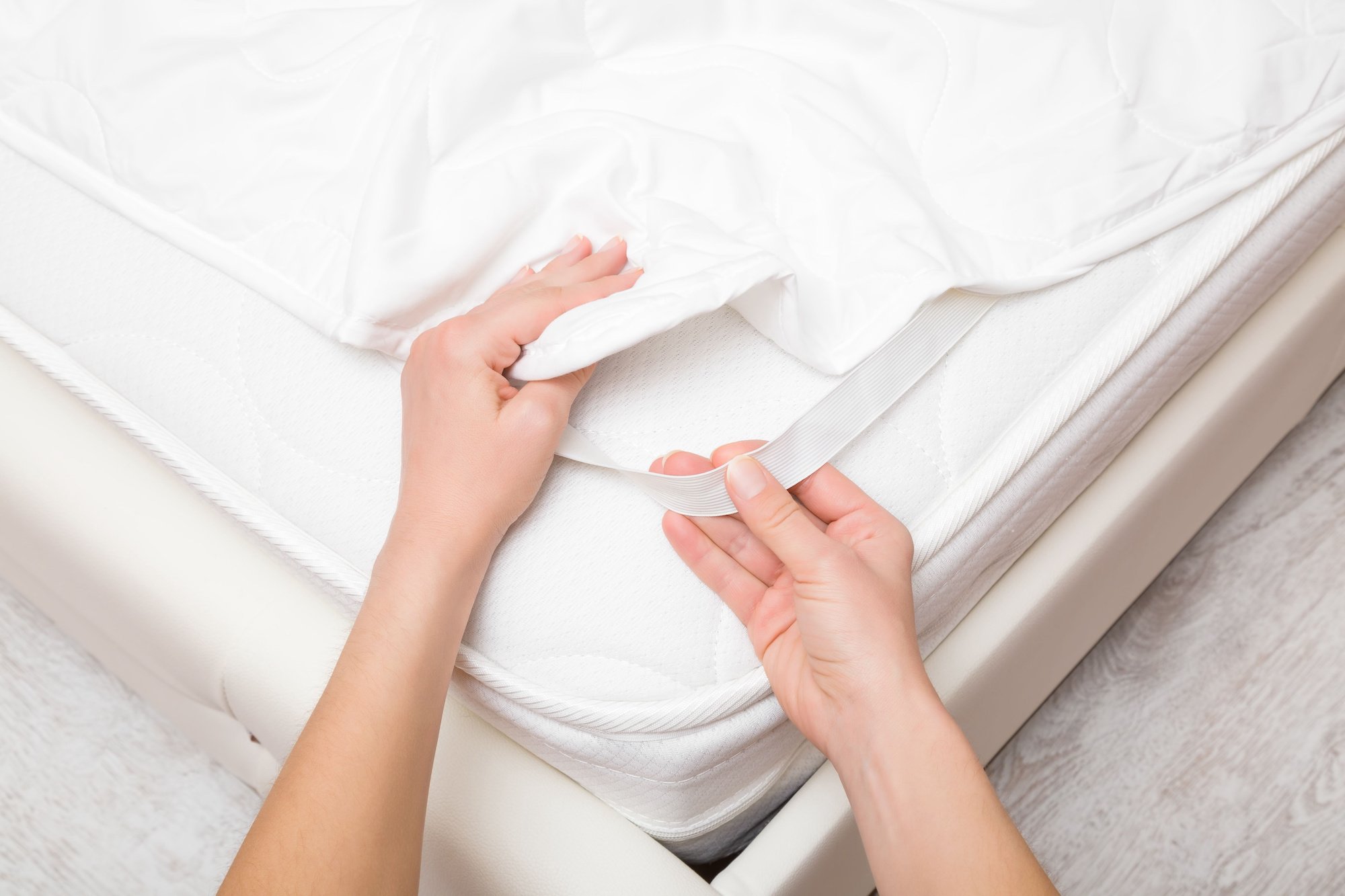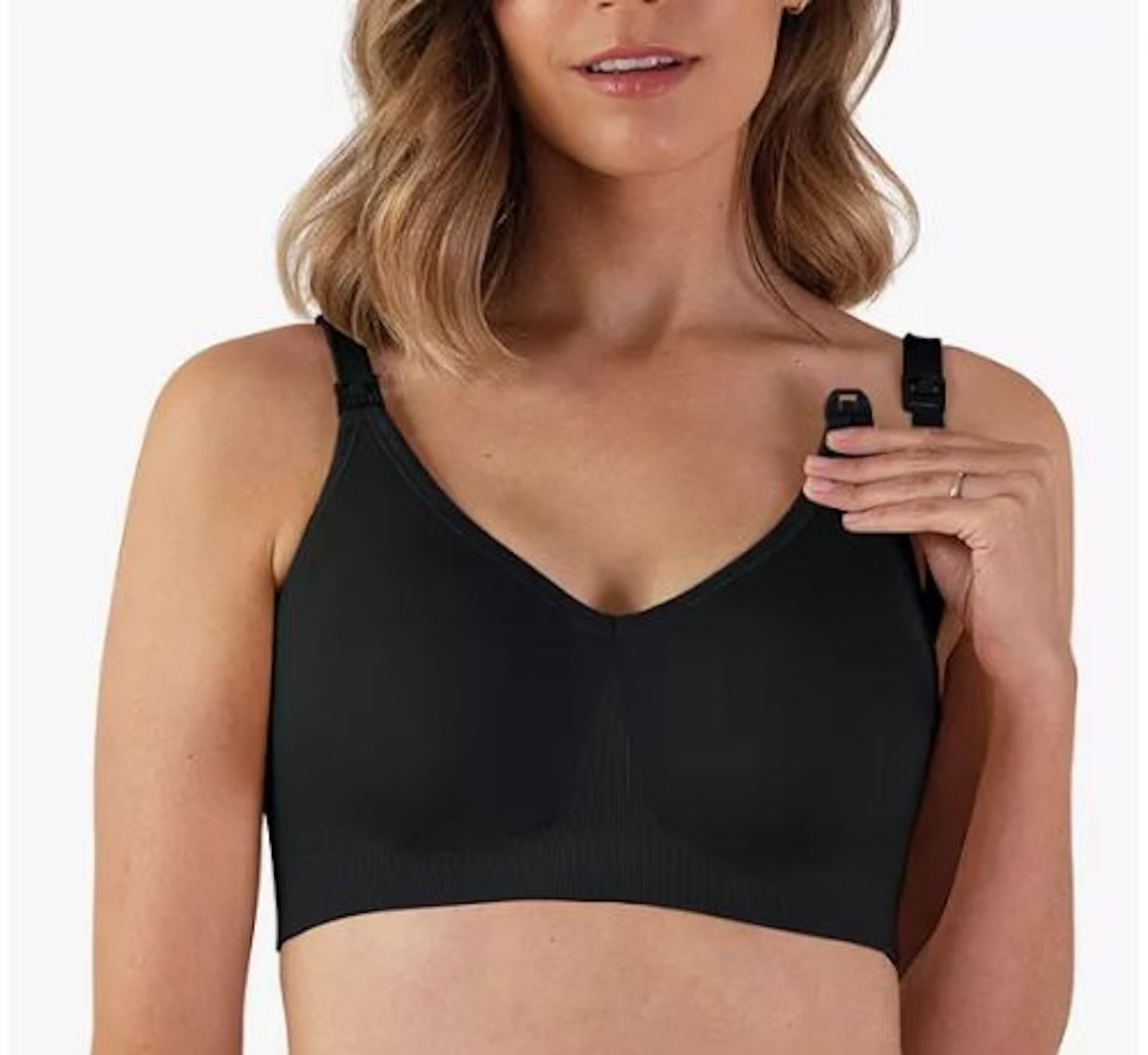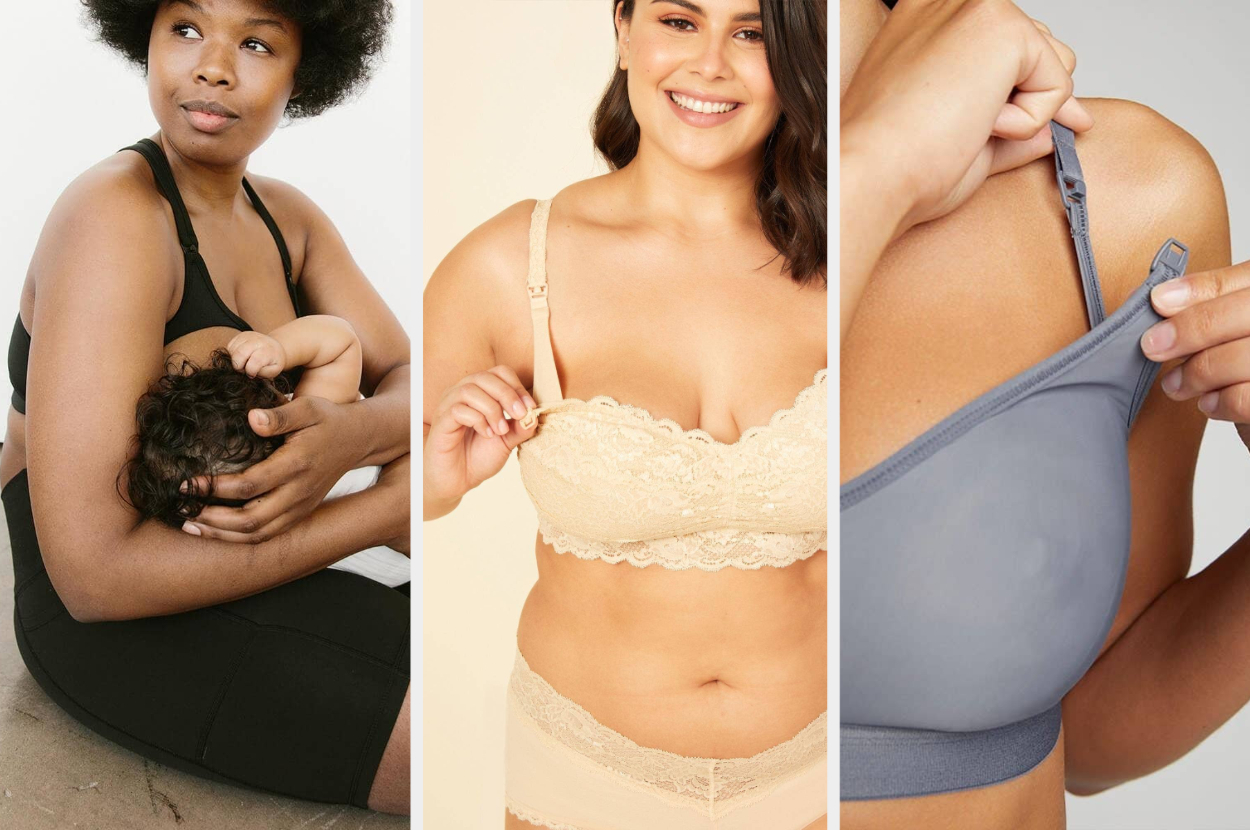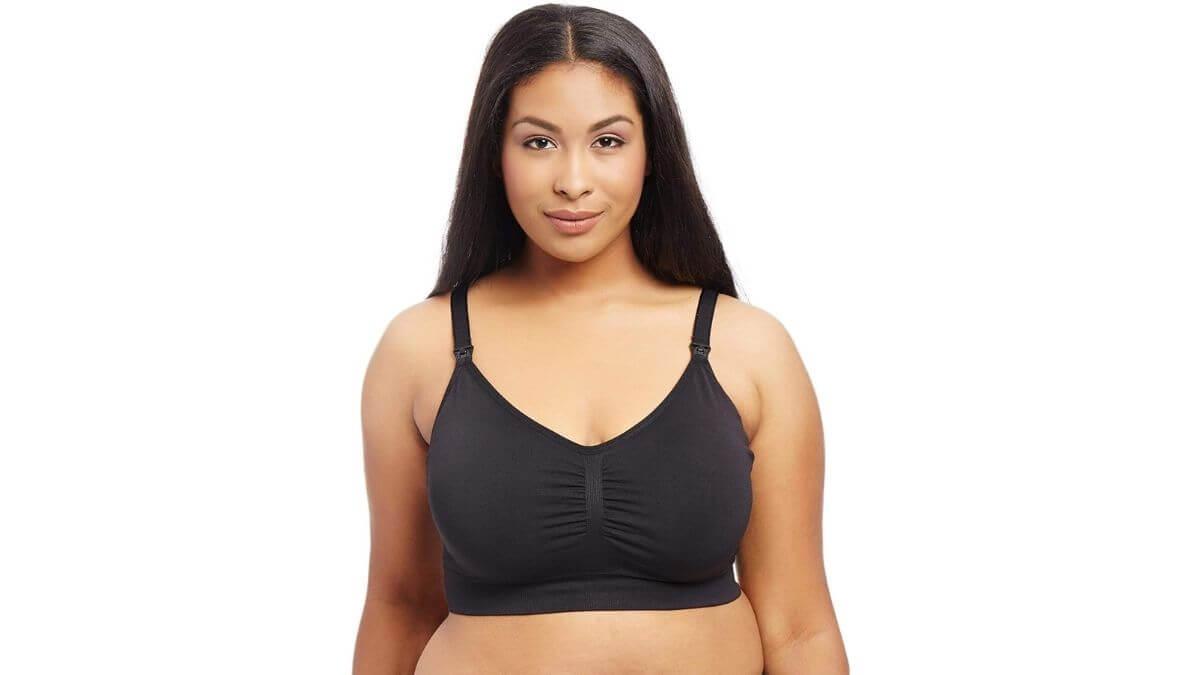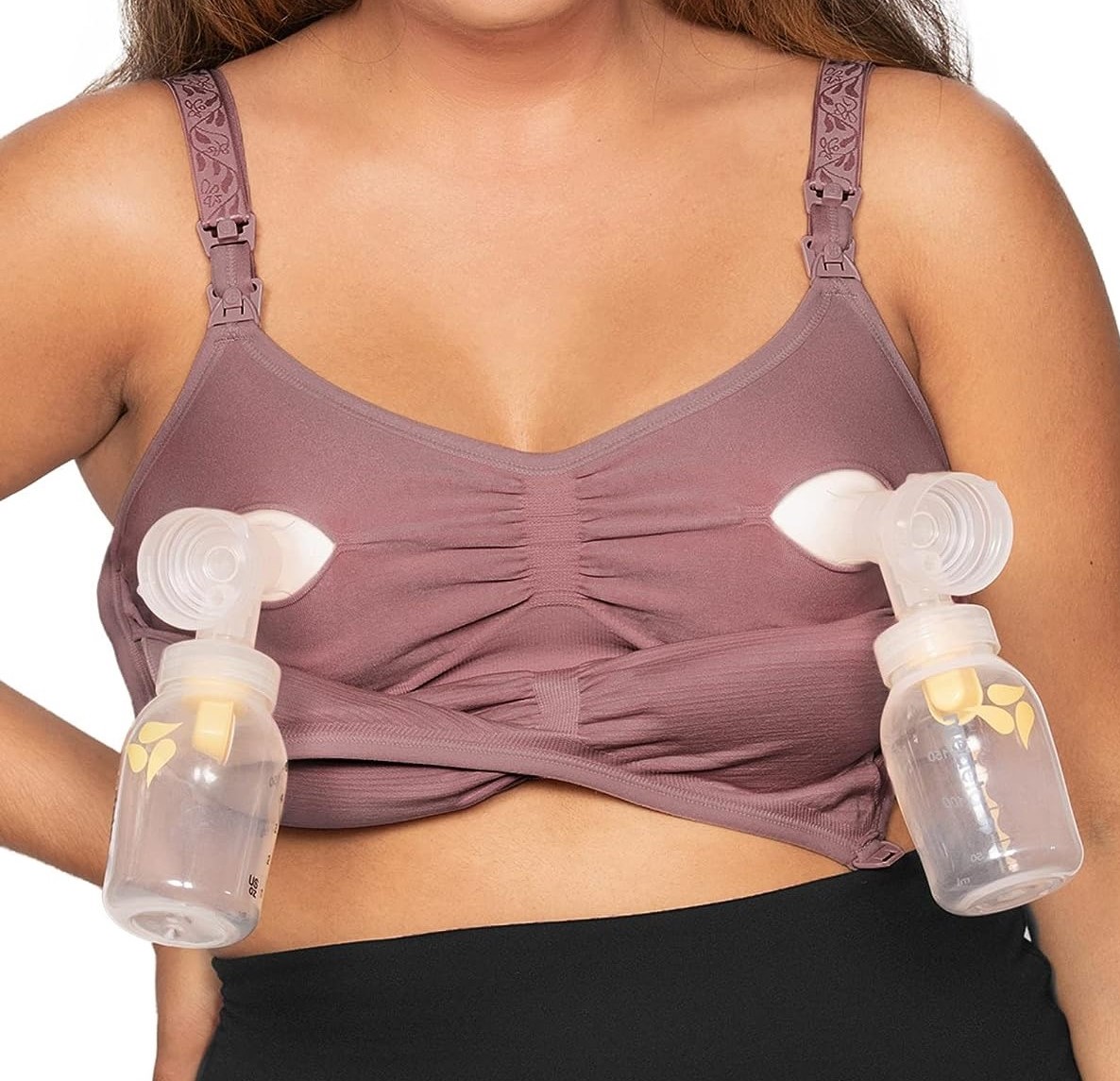Home>Women's Underwear>Bras>How To Use A Nursing Bra For Pumping
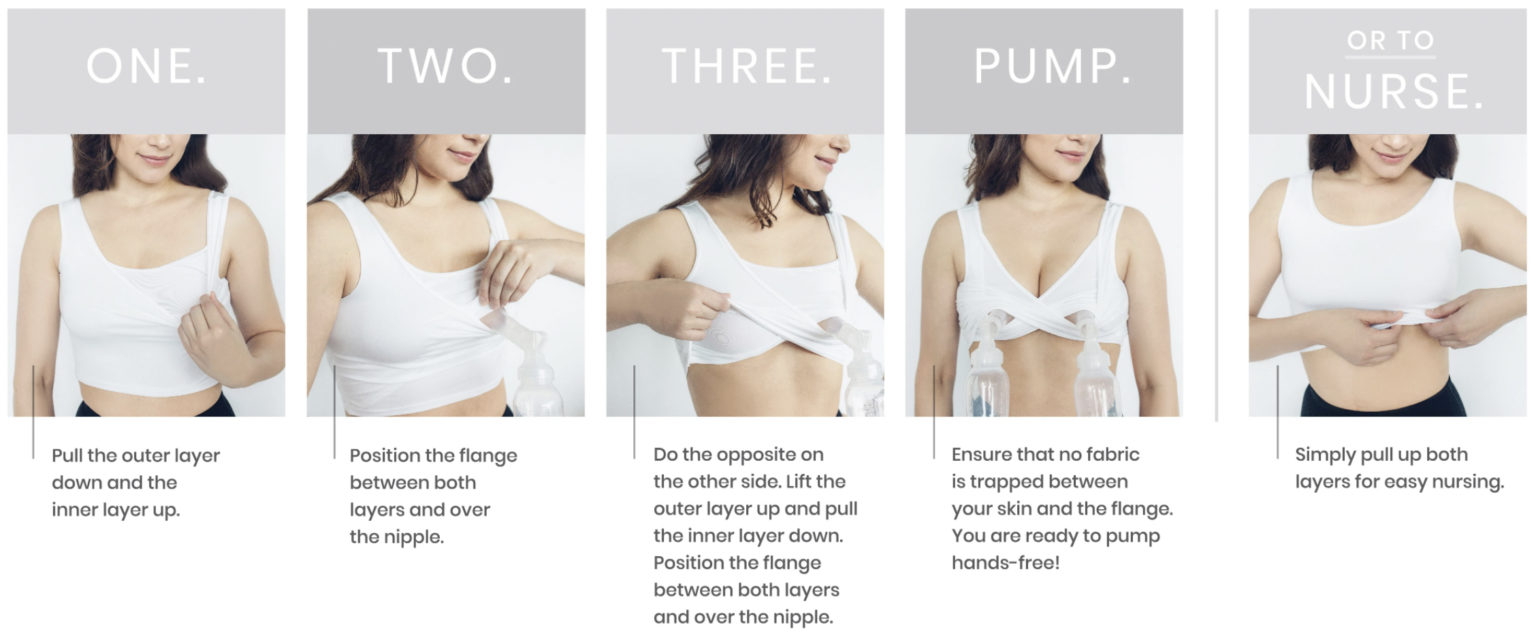

Bras
How To Use A Nursing Bra For Pumping
Modified: August 6, 2023
Discover the proper way to use nursing bras for pumping, ensuring comfort and functionality for breastfeeding moms. Get expert tips and advice on selecting the right bras for your needs.
(Many of the links in this article redirect to a specific reviewed product. Your purchase of these products through affiliate links helps to generate commission for Under-tec.com, at no extra cost. Learn more)
Table of Contents
Introduction
Welcome to the world of breastfeeding! It’s an incredible journey filled with unique challenges and rewards. As a new mom, one of the essential items you’ll need is a nursing bra. But did you know that a nursing bra can also be a valuable tool for pumping breast milk?
A nursing bra is specifically designed to make breastfeeding easier and more convenient. It provides easy access to the breasts, allowing you to nurse your baby without having to remove your bra. But what about when you need to pump milk? Can a nursing bra be used for that purpose too? Absolutely!
A nursing bra for pumping is essentially a nursing bra with added features that make it compatible with a breast pump. It allows you to pump milk conveniently and discreetly, without having to remove your bra. With a nursing bra for pumping, you can multitask, pump on the go, or even pump at work without needing to find a private space.
In this article, we’ll explore the benefits of using a nursing bra for pumping and guide you on finding the perfect one for your needs. We’ll also provide you with step-by-step instructions on how to use a nursing bra for pumping effectively. By the end of this article, you’ll have all the information you need to make the most out of your nursing bra for pumping.
What is a nursing bra?
A nursing bra is a specialized undergarment designed to support and accommodate breastfeeding mothers. Unlike regular bras, nursing bras are equipped with features that make breastfeeding easier and more accessible. They typically have cups that can be easily unclipped, folded down, or pulled aside to allow for easy access to the breasts.
Nursing bras are constructed with soft and breathable fabrics that provide comfort and support without compressing the breasts. They offer adjustable straps and multiple hook settings, allowing for flexibility as your body changes during pregnancy and postpartum. The wide underband and reinforced cups provide additional support to prevent sagging and discomfort.
One of the key features of a nursing bra is the inclusion of nursing clips or clasps on the shoulder straps. These clips allow you to easily open and close the cups with one hand, making breastfeeding a breeze. By unclipping the cup, you can nurse your baby without having to fully remove your bra, providing convenience and privacy.
Nursing bras come in a variety of styles and designs to cater to different body types and personal preferences. They can be found in wireless, underwire, sports bra, or tank top styles. Some nursing bras also offer additional features such as removable pads for leakage protection, adjustable back panels for a customizable fit, and even built-in hands-free pumping bras for effortless pumping sessions.
It’s important to note that not all bras labeled “nursing bras” are designed for pumping. While regular nursing bras focus on easy access for breastfeeding, nursing bras for pumping are specifically engineered to accommodate the use of breast pumps, providing seamless integration between breastfeeding and pumping.
Now that you have a better understanding of what a nursing bra is, let’s explore the advantages of using a nursing bra for pumping.
Why use a nursing bra for pumping?
Using a nursing bra specifically designed for pumping can greatly enhance your pumping experience and make it more convenient and efficient. Here are several reasons why using a nursing bra for pumping is beneficial:
- Hands-free pumping: A nursing bra for pumping often comes with a built-in pumping bra feature, allowing you to pump milk hands-free. This means you can use your hands to read a book, work on your computer, or take care of other tasks while pumping.
- Discreet pumping: Nursing bras for pumping are designed to provide discreet access to the breasts and pump flanges. They typically have hidden openings or slits, allowing you to pump without exposing your breasts. This is especially useful when pumping in public or in a shared workspace.
- Comfort and support: A nursing bra for pumping offers the same level of comfort and support as a regular nursing bra. Its soft and stretchy fabric, adjustable straps, and wide underband ensure a comfortable fit during pumping sessions.
- Time-saving: With a nursing bra for pumping, you can easily transition between breastfeeding and pumping without having to change bras. This saves you time and eliminates the hassle of switching garments during your busy day.
- Convenience on the go: Whether you’re running errands or traveling, a nursing bra for pumping allows you to pump wherever you are. You can simply slip in your breast pump flanges and start pumping without needing a separate pumping bra or finding a private space.
- Supportive pumping position: Nursing bras for pumping often have built-in support panels that hold the breast pump flanges securely in place. This helps to maintain a proper pumping position, preventing discomfort and ensuring an optimal milk flow.
By using a nursing bra specifically designed for pumping, you can streamline your breastfeeding and pumping routine, making it easier to balance your daily activities without compromising on the nourishment of your baby. Now let’s move on to finding the right nursing bra for pumping.
Finding the right nursing bra for pumping
When it comes to finding the right nursing bra for pumping, there are a few key factors to consider. Here are some tips to help you make the right choice:
- Size and fit: Just like with regular bras, finding the right size is crucial for comfort and support during pumping. Take accurate measurements of your bust and underbust to determine your current size and consult the sizing chart provided by the bra manufacturer. Keep in mind that your size may change throughout your breastfeeding journey, so consider getting a bra with adjustable features like stretchy fabrics or multiple hook settings.
- Accessibility: Look for nursing bras that provide easy access to the breasts for both breastfeeding and pumping. This typically includes nursing clips or clasps on the shoulder straps and discreet openings or slits for pump flange insertion. Ensure that the bra can be easily unclipped or folded down with one hand, allowing for seamless transitions between breastfeeding and pumping.
- Support: Proper support is essential for comfortable pumping sessions. Opt for nursing bras that offer good support with a wide underband, adjustable straps, and reinforced cups. Look for bras that have additional support panels specifically designed to hold the breast pump flanges securely in place.
- Functionality: Consider the features that will enhance your pumping experience. Some nursing bras have built-in hands-free pumping bra features, allowing you to pump without needing to hold the pump flanges in place. Others have removable pads for leakage protection or adjustable back panels for a customizable fit. Think about your specific needs and preferences to choose a bra that offers the functionality you desire.
- Comfort: Look for nursing bras made from soft, breathable, and stretchy materials that provide ultimate comfort during long pumping sessions. Bras with seamless designs and tagless labels can prevent irritation and ensure a pleasant wearing experience.
- Reviews and recommendations: Read reviews and seek recommendations from other breastfeeding moms to get insights into the comfort, durability, and usability of different nursing bras for pumping. Hearing from others who have already experienced using these bras can give you valuable information to make an informed decision.
Remember, finding the right nursing bra for pumping might involve some trial and error. What works for one person may not work for another, so be patient and willing to experiment until you find the perfect bra that meets your needs.
Now that you have a better understanding of how to choose the right nursing bra for pumping, let’s move on to the step-by-step guide on using a nursing bra for pumping.
Step-by-step guide on using a nursing bra for pumping
Using a nursing bra for pumping is a straightforward process that can quickly become a part of your pumping routine. Follow these step-by-step instructions to properly use a nursing bra for pumping:
- Put on your nursing bra: Start by putting on your nursing bra as you would with a regular bra. Ensure that the bra fits well and provides ample support to your breasts.
- Open the nursing clips: Locate the nursing clips on the shoulder straps of your bra. With one hand, unclip or undo the nursing clips on both sides of the bra to open the cups.
- Ensure proper breast positioning: Adjust your breasts to ensure that they are positioned correctly within the cups of the bra. Make sure that your nipples are centered within the openings or slits of the bra, ready for pump flange placement.
- Insert the pump flanges: Insert the pump flanges into the openings or slits of the bra, aligning them with your nipples. Ensure that the flanges are securely held in place by the bra’s support panels, providing a snug fit.
- Start pumping: With your pump flanges securely in place, start your breast pump according to the manufacturer’s instructions. Adjust the suction and speed settings to your comfort level.
- Monitor the pumping process: Keep an eye on the milk flow and monitor your comfort levels while pumping. You can use this time to relax, read a book, catch up on emails, or engage in any other activity since your hands will be free.
- Finish pumping and remove the pump flanges: Once you are done pumping, turn off the breast pump and carefully remove the pump flanges from the bra. Make sure to detach them gently, ensuring that your nipples are not pulled or pinched.
- Close the nursing clips: Finally, use one hand to reattach or close the nursing clips on both sides of the bra. This will secure the cups and provide proper breast support until the next nursing or pumping session.
Following these steps will help you seamlessly integrate the use of a nursing bra into your pumping routine, providing convenience and comfort during every pumping session. Now, let’s explore some additional tips for maximizing pumping efficiency with a nursing bra.
Tips for maximizing pumping efficiency with a nursing bra
Using a nursing bra for pumping not only provides convenience but also allows you to maximize pumping efficiency. Here are some tips to help you make the most out of your nursing bra and optimize your pumping sessions:
- Choose the appropriate bra size: Ensuring that your nursing bra fits properly is essential for optimal pumping. A well-fitted bra provides proper support and can help promote a better milk supply.
- Wear a hands-free pumping bra: Invest in a nursing bra that has a built-in hands-free pumping feature or purchase a separate hands-free pumping bra. This will free up your hands during pumping, allowing you to multitask or relax.
- Massage your breasts before pumping: Gently massaging your breasts before starting a pumping session can help stimulate milk flow and improve efficiency. This can be done while your nursing bra is still on.
- Find a comfortable and relaxed environment: Creating a calm and comfortable environment during pumping can enhance milk letdown and milk flow. Find a quiet spot where you can relax, play soothing music, or use a breastfeeding app to help you unwind.
- Apply heat or warm compresses: Applying a warm compress or taking a warm shower before pumping can help increase blood flow to the breasts, making it easier to express milk. You can leave your nursing bra on while using warm compresses.
- Practice breast compression: During pumping, use your hands to gently compress and massage your breasts. This can help fully empty the milk ducts and increase the amount of milk expressed. Breast compression can be done over your nursing bra.
- Pump frequently and consistently: Establishing a regular pumping schedule can help maintain your milk supply. Aim to pump as often as your baby would breastfeed to meet their needs. Your nursing bra can facilitate quick and easy pumping sessions.
- Keep your nursing bra clean: Proper hygiene is crucial to prevent contamination and ensure the longevity of your nursing bra. Follow the manufacturer’s cleaning instructions and regularly wash your bra to maintain its quality. Make sure to dry it thoroughly as well.
- Stay hydrated and nourished: Drinking plenty of water and eating a well-balanced diet can support milk production. Keep a water bottle nearby when you’re pumping to stay hydrated, and have nutritious snacks on hand for a quick energy boost.
By implementing these tips, you can make your pumping sessions more efficient, comfortable, and productive. Remember that every breastfeeding journey is unique, so feel free to adjust these tips to your specific needs and preferences.
Now that you have some valuable tips to maximize pumping efficiency with a nursing bra, let’s discuss how to care for your nursing bra to ensure its longevity.
Caring for your nursing bra
Proper care and maintenance of your nursing bra are essential to ensure its longevity and continued effectiveness. Here are some tips for caring for your nursing bra:
- Follow the manufacturer’s instructions: Read and follow the care instructions provided by the manufacturer. These instructions will guide you on how to properly clean, wash, and care for your nursing bra.
- Hand wash or use a delicate cycle: It’s generally recommended to hand wash your nursing bra to prevent damage to the delicate fabrics. If you prefer using a washing machine, choose a gentle or delicate cycle using cold or lukewarm water.
- Use mild detergent: Opt for a mild, fragrance-free detergent specifically designed for delicate fabrics. Harsh detergents can break down the elasticity of the bra and cause damage.
- Avoid fabric softeners and bleach: Fabric softeners can reduce the absorbency and stretchiness of the fabric. Similarly, bleach can weaken the fibers and cause discoloration. Avoid using these products when caring for your nursing bra.
- Hand dry or air dry: Instead of using a dryer, which can cause shrinkage and damage to the bra, lay your nursing bra flat or hang it to air dry. Direct sunlight can cause fading, so choose a shaded area for drying.
- Store them properly: When not in use, store your nursing bras in a clean and dry place. Avoid folding them tightly or stuffing them in a crowded drawer, as this can cause creases and deform the shape of the bra.
- Rotate your bras: Having multiple nursing bras in rotation can help extend their lifespan. Rotating your bras allows each bra to rest and regain its shape between uses, preventing excessive wear and tear on a single bra.
- Inspect for wear and tear: Regularly check your nursing bras for any signs of wear and tear, such as stretched bands or loose stitching. If you notice any damage, it may be time to replace the bra to maintain optimal support and functionality.
- Adjust sizing as needed: Throughout your breastfeeding journey, your breast size might change. Regularly assess the fit of your nursing bra, and if necessary, adjust the sizing or invest in new bras to ensure comfort and support.
By following these care tips, you can keep your nursing bras in excellent condition, ensuring that they continue to provide the support and functionality you need for pumping and breastfeeding.
Now that you know how to care for your nursing bra, let’s recap the key points and conclude our guide on using a nursing bra for pumping.
Conclusion
Using a nursing bra for pumping can be a game-changer for breastfeeding moms. It offers convenience, comfort, and efficiency, allowing you to seamlessly transition between breastfeeding and pumping without the need to change bras. With the right nursing bra for pumping, you can conveniently express breast milk while keeping your hands free for other tasks or simply relaxing.
When choosing a nursing bra for pumping, consider factors like size, accessibility, support, functionality, and comfort. Finding the right fit will make a significant difference in your pumping experience. Don’t forget to check reviews and seek recommendations from other moms to guide your decision-making process.
Remember to follow the step-by-step guide on using a nursing bra for pumping, and utilize the tips provided to optimize your pumping efficiency. Massaging your breasts, creating a comfortable environment, and practicing breast compression can all contribute to better milk flow and more fruitful pumping sessions.
Proper care is essential to ensure the longevity of your nursing bra. Follow the manufacturer’s instructions for washing and caring for your bra, and inspect it regularly for signs of wear and tear. By giving your nursing bra the attention it deserves, you can ensure that it continues to provide the support and comfort you need for successful pumping.
We hope this comprehensive guide has provided valuable insights into using a nursing bra for pumping. By embracing the convenience and functionality of a nursing bra for pumping, you can navigate the world of breastfeeding with greater ease and flexibility.
Happy pumping!
